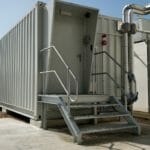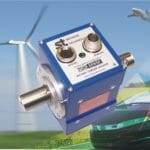Sulzer reverse-engineers compressor component with 40% cost saving
Many industrial processes rely on compressors for a host of essential tasks, from powering machinery to squeezing industrial gases for storage and transportation. When one of its main compressors failed, a company in the Philippines faced high costs and the prospect of a long wait for a critical replacement part. That’s when it turned to Sulzer for help.
Modern centrifugal compressors are high-performance machines. Used in the most demanding industrial applications, their job is to deliver air or other gases at high volumes and high pressures into storage, transportation pipework or to downstream machinery. The machines themselves can be very large indeed, consuming hundreds of kW of power, but the critical component at their heart is a precision-engineered high-speed impeller, which can be just a few cm in diameter.
For one company in the Philippines, damage to this vital part was to be the cause of a prolonged period of expensive disruption. When a large compressor failed, investigations showed that the machine had been operating out of balance for some time. The resulting vibrations had caused such extensive damage to the machine’s 7.4-inch (188 mm) diameter impeller that the part was beyond repair.
With the original manufacturer of the compressor unable to offer a timely or cost-effective replacement, the company approached rotating equipment specialists at Sulzer for a solution.
Digital modelling and measurement
The damaged impeller and shaft were removed from the casing and shipped to Sulzer’s facility in Indonesia. Once there, the local engineering team set about collecting all the data needed to recreate the part. Using a combination of laser scanning technology and conventional measurements, the team collected digital and dimensional inspection data to build a complete 3D representation of the impeller.
The data was then used by Sulzer experts to build a 3D solid model of the replacement component. The damage to the impeller was extensive, so the Sulzer team had few complete surfaces they could use as a basis for their model. By applying engineering analysis to the geometry of the broken part however, they were able to “undo” the damage digitally and determine the precise geometry of the original component.
While the experts were working on the geometry, their colleagues were continuing their own work to reverse-engineer the component. They used x-ray fluorescence (XRF) analysis to establish the exact chemical composition of the impeller. That allowed Sulzer to source the same alloy in order to manufacture the replacement. Finally, the team used zebra analysis to determine the surface continuity quality in the 3D model that would affect the surface finish required for the new part during the machining process.
Machining expertise
With the model, material and relevant manufacturing information now available, it was time for Sulzer’s CNC machining specialists to step in. A manufacturing team in Houston produced the replacement part, which was machined from a single block using five-axis milling techniques.
After surface finishing, the part was spin tested at high speed in Houston to check for any imbalance before shipment to Indonesia. The Indonesian team assembled and balanced the new impeller on the original shaft before returning it to the customer for installation in the machine.
“This project shows Sulzer’s global capabilities at their best,” says Hepy Hanipa, Head of Turbo Services South East Asia. “This was a relatively small, but highly complex component and its performance was critical to our customer’s operations. Close cooperation between Sulzer teams working on opposite sides of the world allowed us to deliver a high-quality solution on a timescale that met the customer’s needs whilst delivering a 40% cost saving.”
Image Captions:
Image 3: The complex impeller geometry was recreated using expertise from across the world.
About Sulzer:
Sulzer, headquartered in Winterthur, Switzerland, since 1834, specializes in pumping solutions, services for rotating equipment, and separation, mixing, and application technology. Sulzer provides cutting-edge maintenance and service solutions for rotating equipment dedicated to improving customers’ processes and business performance. When pumps, turbines, compressors, generators, and motors are essential to operations, Sulzer offers technically advanced and innovative solutions. The company creates reliable and sustainable solutions for its markets: oil and gas, power, water, and general industry. Sulzer serves customers around the world through a network of over 180 production and service sites, and it has a strong footprint in emerging markets. In 2016, the company achieved sales of roughly CHF 2.9 billion with around 14 000 employees. www.sulzer.com
The image(s) distributed with this press release may only be used to accompany this copy, and are subject to copyright. Please contact DMA Europa if you wish to license the image for further use.








